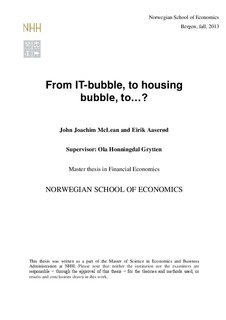| dc.description.abstract | We ask three research questions: 1) Did government intervention contribute to the housing bubble of 2008? 2) Are the same recovery policies conducted today, on the way out of the housing bubble? 3) Are we heading for a new wave of financial crises? What kind and how? With theoretical perspective of Minsky and the Austrian school of economics we assess the data necessary to explain the course of events and answer our questions in a comparative study of USA, the euro area, and Norway. Through qualitative and quantitative analyses, we find evidence that the government did contribute to the housing bubble through both fiscal and monetary policies. Not only are the same policies conducted today, but also to a much larger degree. The answers of the first two questions lay the foundation for the third, where we conclude; yes, we are heading for a new wave of financial crises. In USA we find potential for stock market crisis through a credit crunch. For the euro area we find general potential for malinvestments, and possibility of both credit- and real resource crunch. And, in Norway we find potential for a housing- and stock market crisis through a credit crunch – or possibly a real resource crunch through housing construction. We do see possibility of rescue with increased saving. On the side we find Minsky’s theories well fit to explain the course of events and the Austrian school valuable in explaining underlying factors. | nb_NO |
